A Jungle Safari Experience in Panna National Park

As our postgraduate program in landscape architecture at CEPT Ahmedabad was coming to an end, my classmates and I discussed our individual vacation plans. One of my friends mentioned his plan to visit Jim Corbett National Park in Uttar Pradesh for a tiger & jungle safari. The idea of a jungle safari and the possibility of spotting a tiger fascinated me. Jungle, safari, and forest—all felt adventurous and thrilling experience. Hardly did I know , I will go from Corbett to Panna for the Jungle Safari Experience chasing the beast.
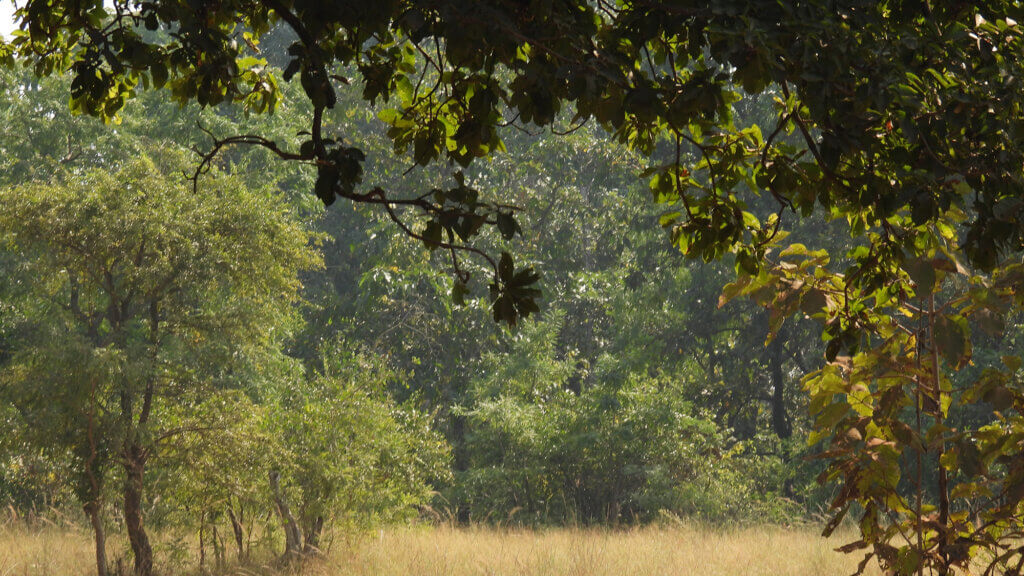
Corbett National Park quickly became one of my must-visit places, and when I planned a trip to Nainital in 2006, visiting Corbett was a priority. By then, the state had become Uttarakhand.
The 2006 Visit to Corbett National Park
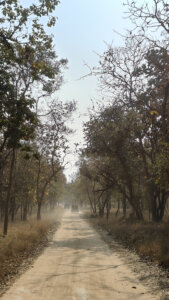 For this first jungle safari, my kids, aged seven and two, were appropriately excited and even woke up at 4:30 a.m. to get ready for the 6 a.m. jungle safari. We were enthusiastic and quite sure we would spot a tiger in the dense, moist deciduous forest at the foothills of the Himalayas. Our guide kept us engaged with stories about Jim Corbett and the man-eaters of Kumaon.
For this first jungle safari, my kids, aged seven and two, were appropriately excited and even woke up at 4:30 a.m. to get ready for the 6 a.m. jungle safari. We were enthusiastic and quite sure we would spot a tiger in the dense, moist deciduous forest at the foothills of the Himalayas. Our guide kept us engaged with stories about Jim Corbett and the man-eaters of Kumaon.
Jim Corbett, a British hunter-turned-conservationist, played a crucial role in raising awareness about tiger conservation. His books, particularly Man-Eaters of Kumaon, documented his experiences hunting man-eating tigers that terrorized villages. However, as he understood their ecological significance, he became a pioneer in tiger conservation. His efforts led to the establishment of India’s first national park in 1936, initially named Hailey National Park and later renamed in his honor.
The guide kept showing us tiger pugmarks, building our anticipation further. We saw deer, nilgai, sambar, owls, and Indian hog deer, staying alert for jungle calls, expecting to spot a tiger at any moment. But alas, we didn’t.
Encouraged by our guide, we took an evening jungle safari, hoping for better chances. Venturing deeper into the core area, we spotted elephants. The lush forest, the pebbled Ramganga River, and the overall experience mesmerized us—but the tiger remained elusive.
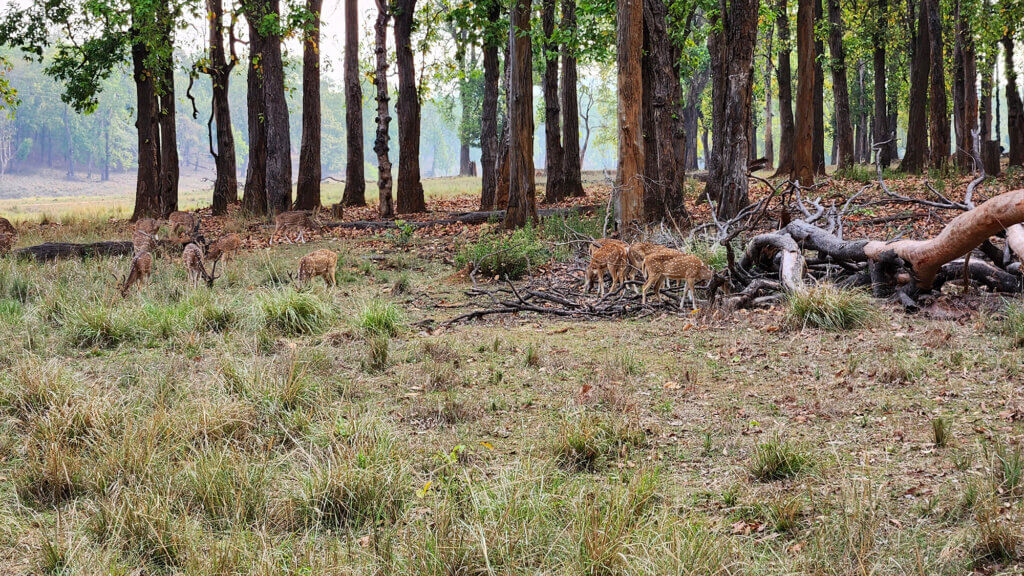
Undeterred, we continued our quest. In fact, this particular safari inspired us to take many more in the future.
Chasing the Tiger: Ranthambore, Periyar, and Beyond
Six months later, we visited Ranthambore National Park, which had recently gained fame due to a visit by then U.S. President Bill Clinton. I guess the tiger was impressed by the visit and granted him a sighting, but we weren’t so lucky! Despite staying at the old hunting lodge, now an RTDC hotel within the jungle area, and my three-year-old staying unusually quiet in anticipation throughout the safari, we returned without a tiger sighting. The experience of the dry deciduous forest and a safari in a long bus with international visitors was memorable, but the elusive beast remained unseen.
Over the years, we explored various tiger reserves:
Periyar National Park (2011)
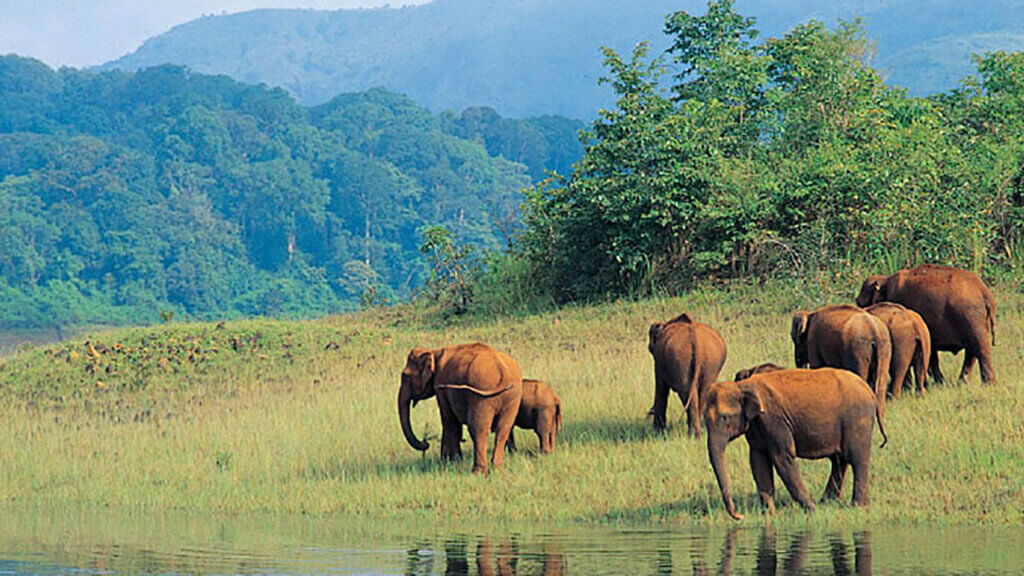
A tropical evergreen and moist deciduous forest in Kerala, featuring grasslands and the beautiful Periyar Lake. It also offers safaris on boats, which in itself was a unique experience. This forest stood out from the others I have visited due to its lush green grasslands along the water’s edge. We spotted deer, wild boars, birds, and a herd of elephants as we moved through the lake—but no tiger.
Bandipur and Mudumalai (2015)

We had started from Ooty on our way to Mysore when we visited this jungle. The beautiful tropical evergreen forests lined the road, which wound through dense vegetation from Ooty to Mysore. Mist-laden mornings and occasional sun rays piercing through the thick canopy added to the forest’s charm. We saw spotted deer, Indian gaur, langurs, a variety of birds, even a majestic looking Bison on the road, but the tiger remained elusive. Still, the sheer wilderness left a lasting impression.
Pench National Park (2015)
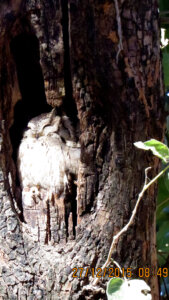
This dry deciduous forest, said to have inspired The Jungle Book, had a charm of its own. The landscape was dotted with open meadows, teak forests, and serene water bodies with birds perched on the small islands. We spotted a sleeping owl, vultures and deers but I was convinced we were too noisy—and the tiger didn’t want to show up.
Heartbreaking Safari at Kanha National Park
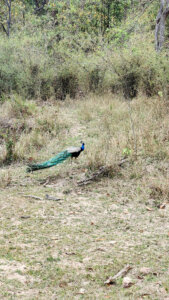 Despite repeated disappointments, I remained hopeful. In 2023, we visited Kanha Kisli, a moist deciduous forest known for easy tiger sightings. It was a family get-together, and we went on a morning jungle safari in three different vehicles, each taking its own route. The jungle safari was enjoyable with the company of family, but after three hours, ours was the only vehicle that did not spot the beast up close. Though we saw a dancing peacock and other animals, I was heartbroken.
Despite repeated disappointments, I remained hopeful. In 2023, we visited Kanha Kisli, a moist deciduous forest known for easy tiger sightings. It was a family get-together, and we went on a morning jungle safari in three different vehicles, each taking its own route. The jungle safari was enjoyable with the company of family, but after three hours, ours was the only vehicle that did not spot the beast up close. Though we saw a dancing peacock and other animals, I was heartbroken.
I finally concluded that spotting a tiger in the wild simply wasn’t in my fortune, and I decided not to go on any more jungle safaris. I was tired of repeated disappointments.
Tadoba: The Most Forgettable Jungle Safari
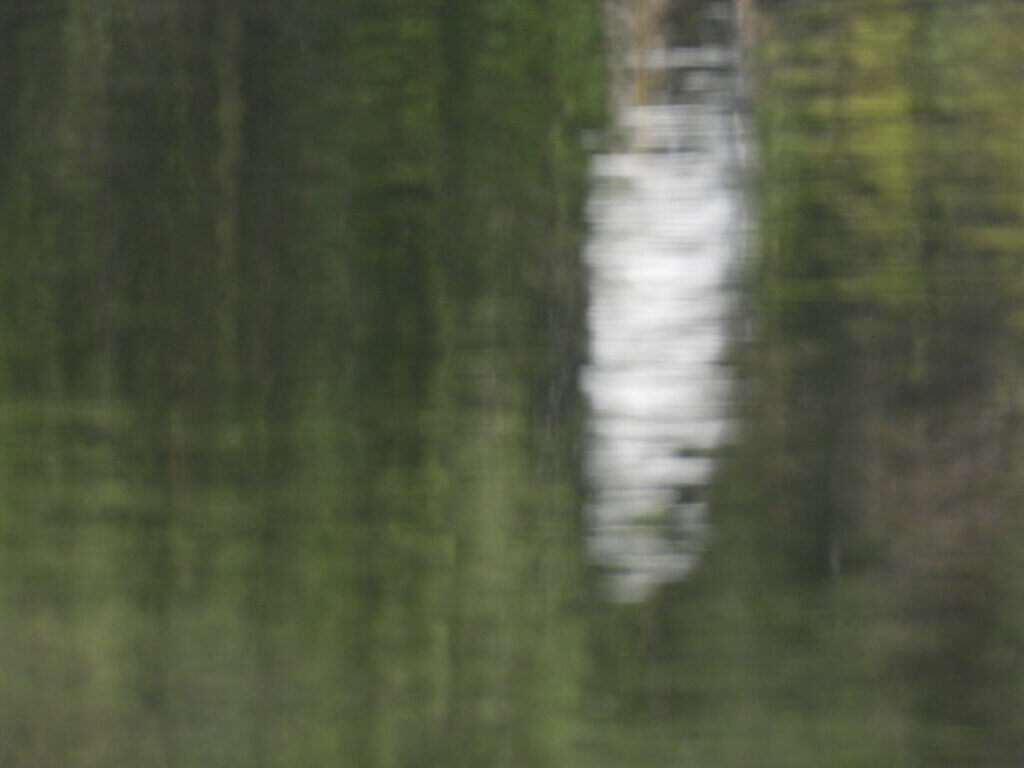
My siblings urged me to visit Tadoba-Andhari Tiger Reserve last December—a tropical dry deciduous forest known for its high tiger population density. “You will definitely spot one here,” they assured me.
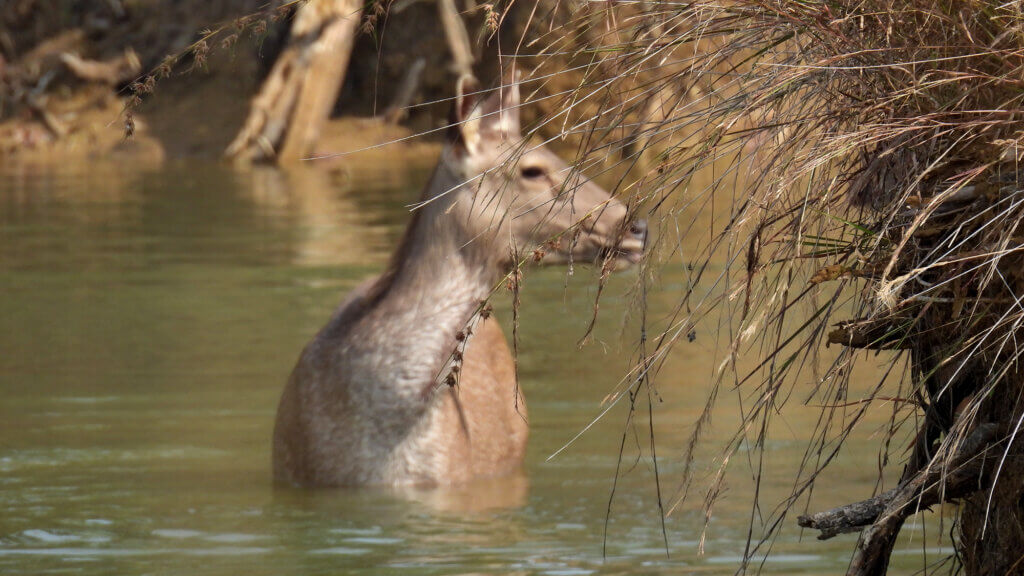
The safari, however, turned out to be the most forgettable of all. For the first time, I did not like a forest much despite spotting some beautiful sambars playing in water – of course, the tiger decided to give it a miss yet again. Despite keeping my expectations low, I was still disappointed. Why, after seven safaris, had I never seen the beast in the wild?
A Rewarding Visit: Panna National Park
When a Khajuraho tour was planned with a group from INTACH Nashik, and a visit to Panna National Park was suggested, I initially refused. But my friends cajoled me: “Even if you don’t spot a tiger, you’ll see a new forest with a new company.”
I must say, that turned out to be a rewarding decision.

We entered Panna National Park from Madla Gate, with Pahar Singh as our guide and Nathuji as our driver. The evening safari had a cool breeze, and the forest changed character every few kilometers—aptly described as a miscellaneous dry deciduous forest with grasslands, savanna, and mixed forests, all nourished by the Ken River.
As we crossed another gate, our guide spotted other vehicles stopped at a point. Something was about to happen. We approached—and there he was.
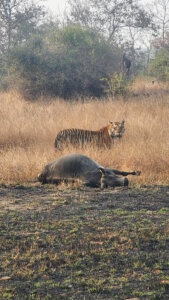
The beast, guarding his kill. Sitting in the classic Lipton tea pose, he enjoyed all the attention yet remained unfazed. Looking around, almost bored, he slowly got up and walked toward a water body. The vehicles promptly gave way to the true king of the jungle.
PC Apeksha Kute

Our hearts were overjoyed as we proceeded further and saw a committee of vultures (yes, I know!) perched on the dry Badore waterfall, overlooking a deep, beautiful gorge.

The Magical Grassland: A Scene from Vrindavan
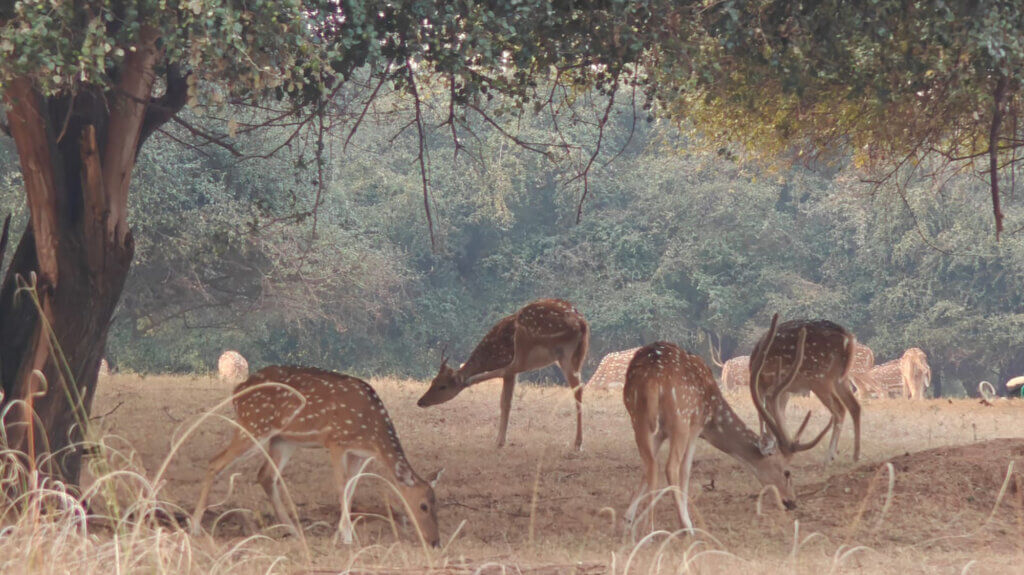
On our way back, we saw crocodiles lazily basking on the Ken River banks, peacocks in flight, and numerous birds. But what mesmerized me most was a patch of grassland—a scene of absolute peace. Here, multiple herds of deer, peacocks, monkeys, and wild boars wandered together, coexisting in harmony. The breeze was cool, the trees were small, and the place felt like paradise—like Vrindavan, as described in books. For a moment, all these animals lived in peace, under the unseen protection of some divine force, unbothered by the fact that more than 56 tigers roamed the forest.
Final Thoughts
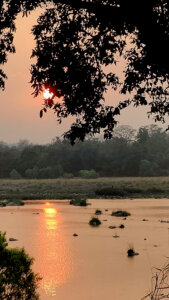 As we exited the jungle safari after witnessing an amazing sunset on the Ken River, my heart was overwhelmed with emotions. The orange sun reflected beautifully in the flowing waters, creating a serene evening in the wilderness—a fitting farewell to a journey that had been years in the making.
As we exited the jungle safari after witnessing an amazing sunset on the Ken River, my heart was overwhelmed with emotions. The orange sun reflected beautifully in the flowing waters, creating a serene evening in the wilderness—a fitting farewell to a journey that had been years in the making.
All in all, these jungle safaris have enriched my understanding of India’s diverse and rich flora and fauna. Whether it was the dense, moist deciduous forests of Corbett, the dry deciduous landscapes of Ranthambore, or the tropical evergreen expanses of Periyar, each held a unique beauty, mesmerizing visitors with its labyrinthine wilderness. More than that, this journey has been one of patience, excitement, disappointment, hope, and perseverance—ultimately rewarded by experiencing nature in its purest form and finally witnessing its majestic beast in the wild.
Know your Forests
Join me on this adventure, and I look forward to our shared exploration of the world through my lens.
Join Us on Social Media

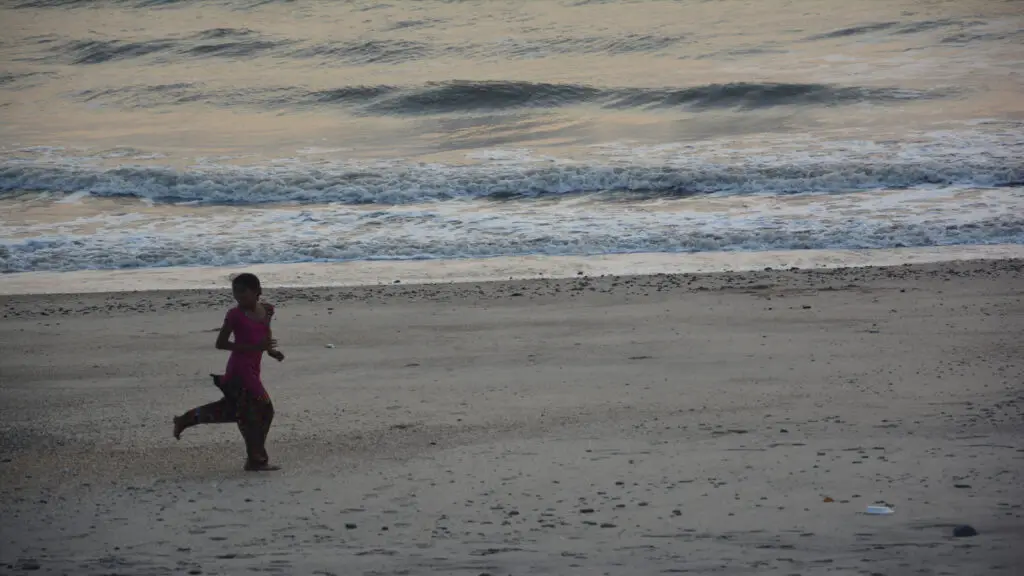
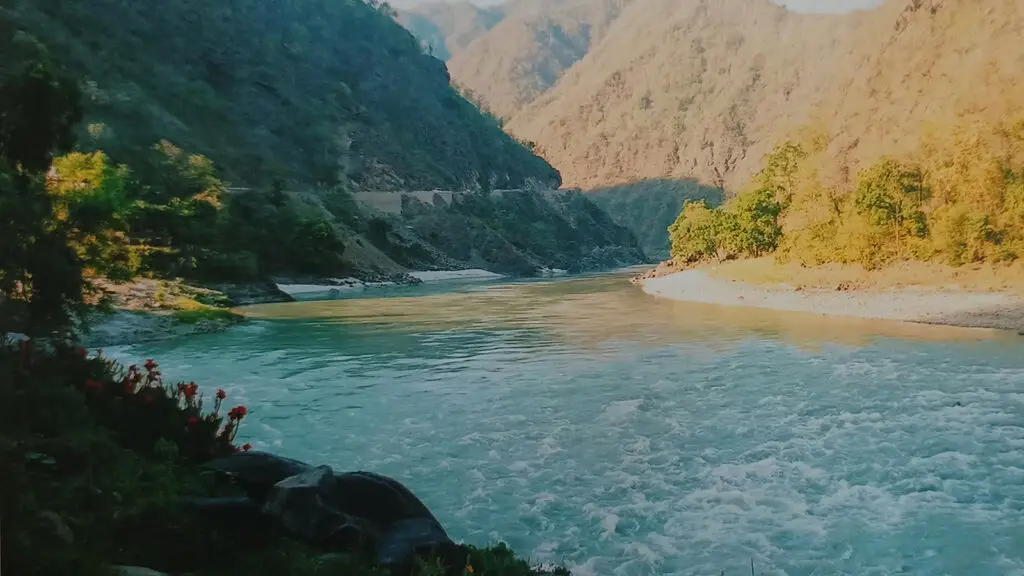

it’s a nice blog .
Same thing was happened with us in the Bhadhavgarh National Park
Thank you Dipti! Keep reading and visiting places
Excellent work 👏👏… I also getting excited when i saw tiger 🐯 picture. I always having passion about wild and domestic animals also. I hope i will be plan my tour very soon..
thanks Punam
I haven’t checked in here for some time because I thought it was getting boring, but the last few posts are great quality so I guess I’ll add you back to my everyday bloglist. You deserve it my friend 🙂